& more from the Tywyn Sea-Defence scheme
BACK
TO WEATHER-BLOG MENU
New!
Fine Art Prints & digital images for sale-
Welsh Weather
& Dyfi Valley landscapes Slide-Library - Click HERE
| It's
almost March - just a few days to go - and down by the coast the first
Celandines are flowering - golden gems in the otherwise drab verges.
Inland, a wintry feel persists though, with the hills again plastered
in snow and coatings down to lower levels. This winter is certainly
dragging its feet! The chart below is of interest. In most recent winters, the dominant jet-stream across the North Atlantic has run in a series of ridges and troughs from Newfoundland out to mid-Atlantic and then NE towards Scandanavia. But look at it at the moment! It is the band of strong high-altitude winds (marked by reds and yellows) that runs across and into southern Spain and the Mediterranean. As a consequence, storms are developing much further to the south and where it's warmer - hence they are more intense, as the unfortunate people of Madeira witnessed recently. Charts show a broadly similar pattern for some time to come, with further heavy rainfall for parts of the Iberian Peninsula and, for parts of the UK, more snow. 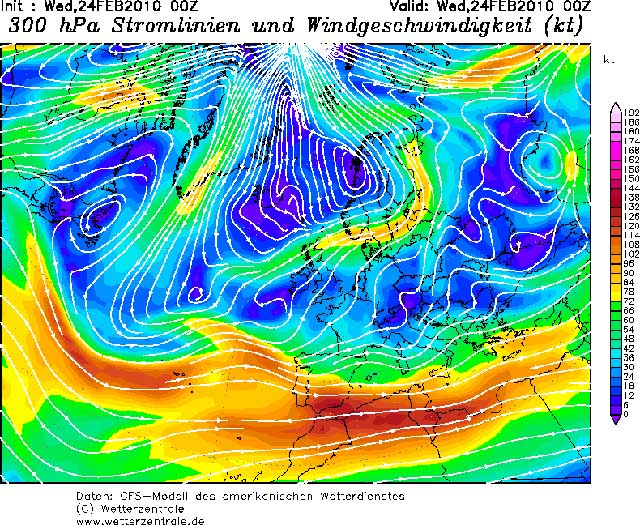 The sun's influence becomes more obvious into March, though, so conditions will feel quite pleasant on sunny days in the coming weeks. It'll be a slow start in the garden though, with the soil so cold - I'm expecting to be planting a full month later than usual. On the 24th I had to go to Corris and afterwards, with high tide at just after 4pm, I thought I'd head down the Dysinni valley to Tywyn and have another look at the sea-defences project, which proved rewarding as I was able to watch a barge coming into the beach to drop off its cargo of boulders. More below. The upper Dysinni valley was white over, with several inches of the stuff on the surrounding hills:  From Tal-y-llyn lake, this was the view up towards the pass. The main road to Dolgellau is obvious. 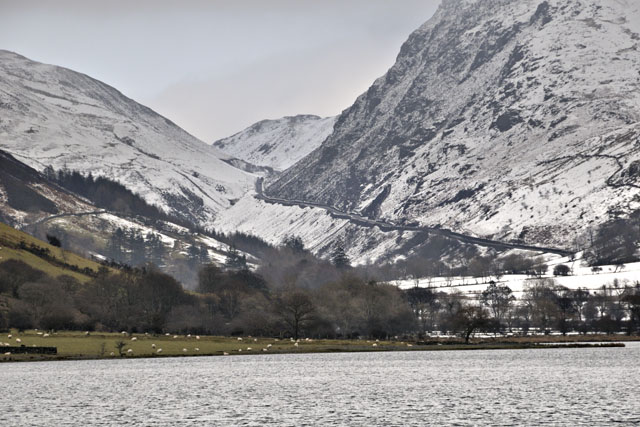 Immediately below Tal-y-llyn I stopped and took a series of images of the unusually smooth hummocky ground: 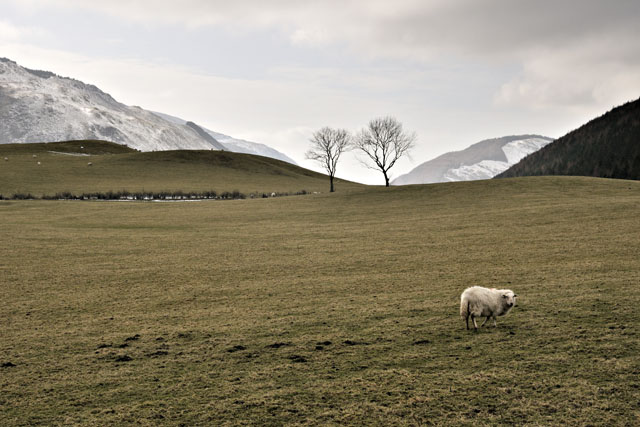 This is the Graig Goch landslide, a huge slip that has blocked Afon Dysynni, forming the dam to Tal-y-llyn lake. The volume of material involved is thought to be in the order of 40 to 50 million cubic metres. The debris spans the 400 metres wide valley and extends 1200 metres down the valley and it is 90-100 metres thick. That is MAJOR! 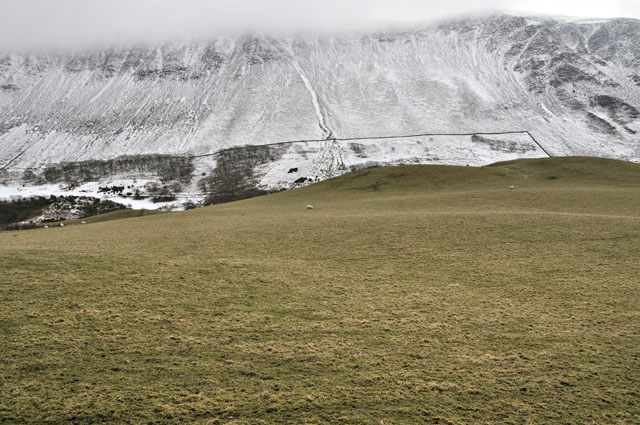 Here's a Google Maps view showing Tal-y-llyn (top) and the "bite" taken out of the mountainside: 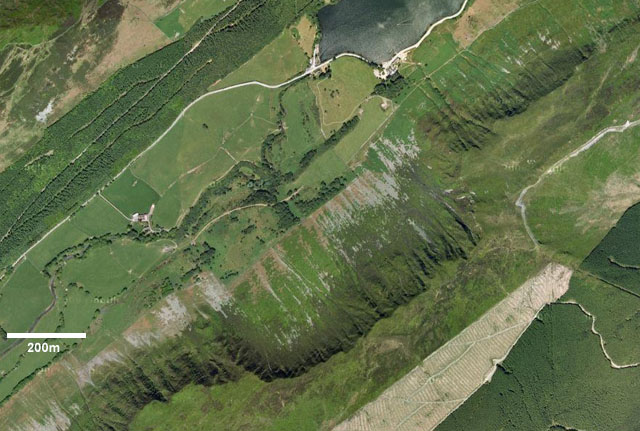 When this occurred is not entirely certain, although it is considered to post-date the peak of the last glacial that ended 12,000 years ago. Three main scenarios have been proposed to explain what happened: 1) Glacial scouring in the last ice-age left the valley sides too steep and high to support their own weight, thus, as the glaciers retreated, removing their support, they collapsed. 2) The valley sides were left unstable by glacial erosion, but persisted until after the glaciers had retreated before collapsing. 3) The landslide was caused by seismic activity i.e. an earthquake on the Caledonian Bala Lineament, of which the Tal-y-llyn Fault (the reason why the valley is so straight) is the local component. Here's another view, looking back up the valley at it, on a day with better visibility:  The hillside above, disappearing into the mist, is still very steep and shedding debris in the form of scree: 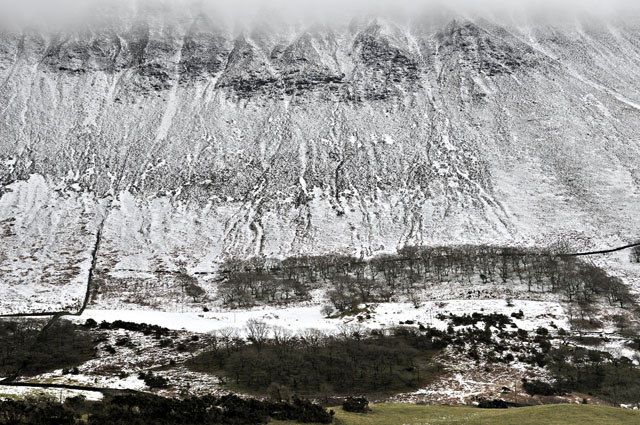 Onward to Tywyn and on arrival there were two boats anchored-up just offshore: the 400-tonne Topi and, further out, the 1800-ton Mari, the latter from St Malo in Brittany. A notice at the site office gave the useful information that a drop-off of boulders would be occurring within a couple of hours, so given the pleasant weather I decided to wait and see what photographic opportunities this might bring. 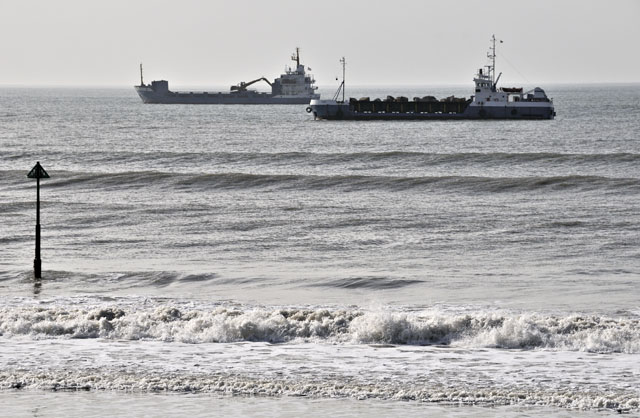 In the meantime, the grabs and dumpers were busily at it again.... 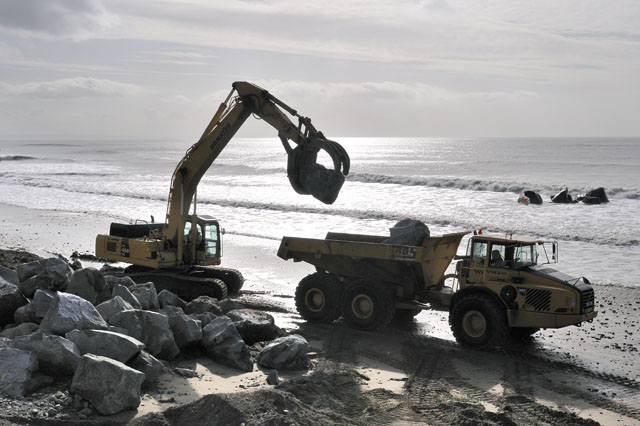 There are serious amounts of stone here now - according to the informative exhibition in the site offices, some 60,000 tonnes of stone are going into the defences, two-thirds of which are being brought in by sea - a neat practical solution given the relatively narrow winding roads in the area! 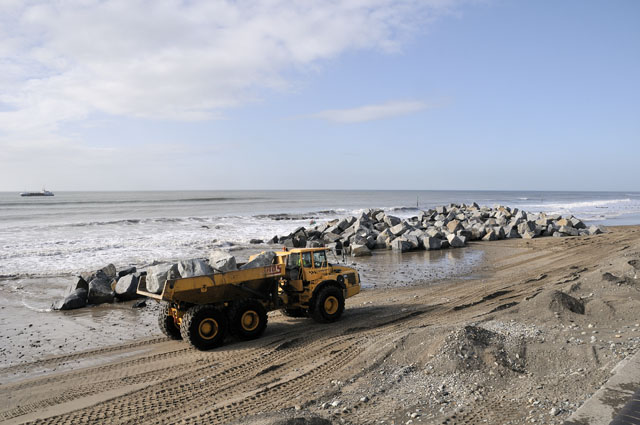 As 3pm approached, the Topi swung round and headed in. They unload in the hours leading up towards high tide: this means that if they get stuck they can wait for the tide to build more and float them back off. There was quite a swell running and it took a couple of goes to get her beached....  She's now got her bow up onto the sand and is ready to start tipping..... 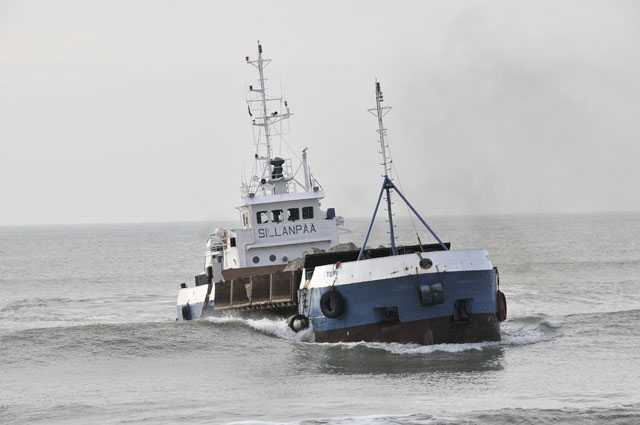 Each tipper holds 6-10 boulders weighing several tonnes each.... 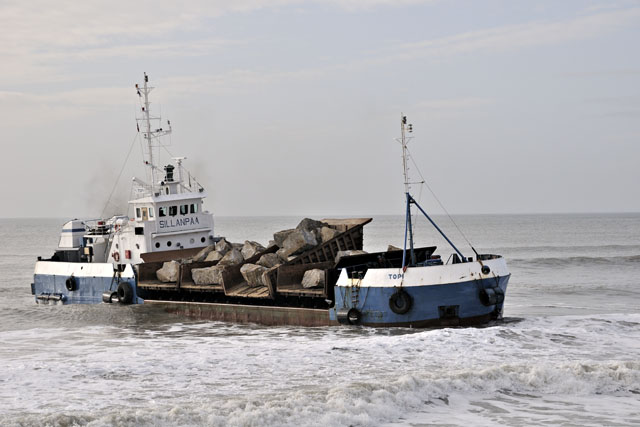 Catching the drop-off is quite tricky. The point at which the lot starts sliding varies from tipper to tipper: first time I just caught the splash and a few airborne broken-off rock fragments: 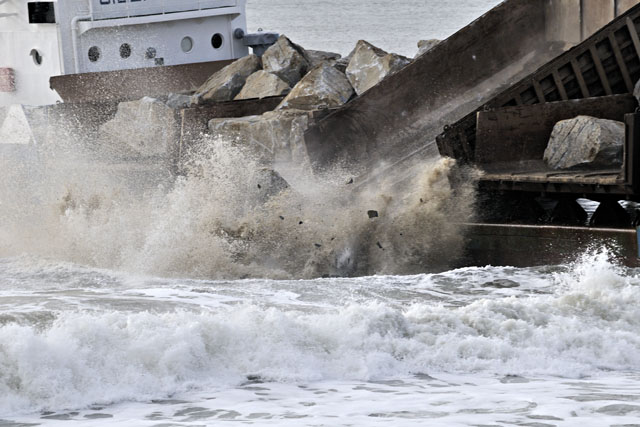 Here's a zoom-out showing how close-in the tipper boat comes:  Second tipping and I was more successful with my timing:  As with the fourth: 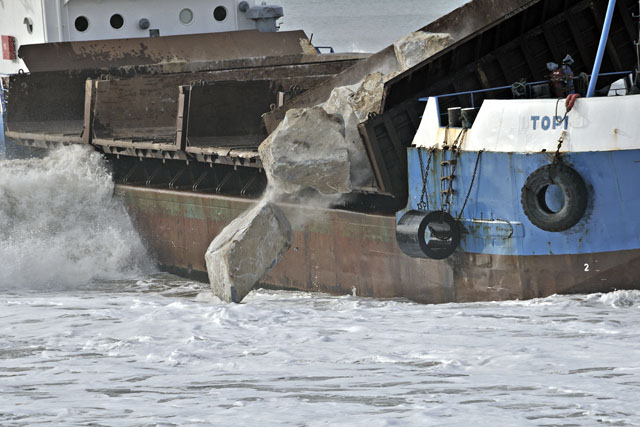 Her cargo dropped off, the Topi headed back out to rendezvous with the Mari - the latter too big to come close-in: 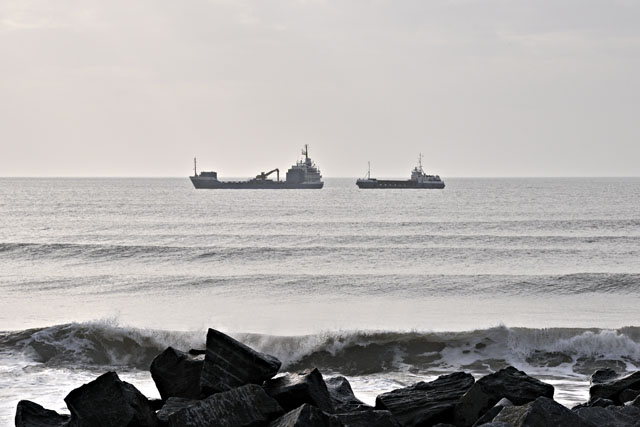 Instead, she reloads the Topi using the huge onboard grab to refill the tippers: 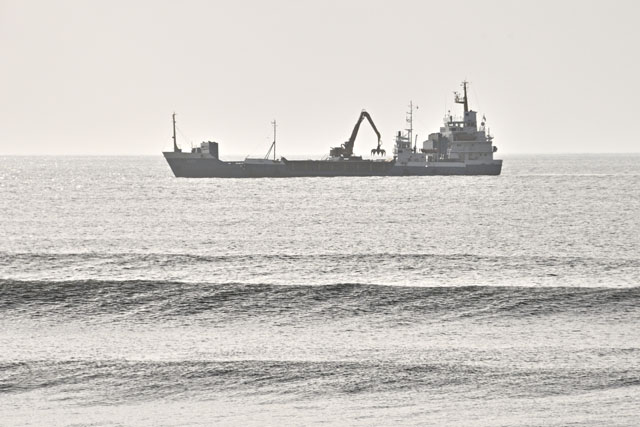 I wasn't alone down there - the pleasant weather had brought out many spectators watching the boats and huge tracked machines at work. The locals are taking a genuine and very active interest in the project - not surprisingly as they have seen how bad things have been getting with coastal flooding during gales. This project should buy them a fair bit of time. |
|
BACK TO WEATHER-BLOG MENU New! Fine Art Prints & digital images for sale- Welsh Weather & Dyfi Valley landscapes Slide-Library - Click HERE |